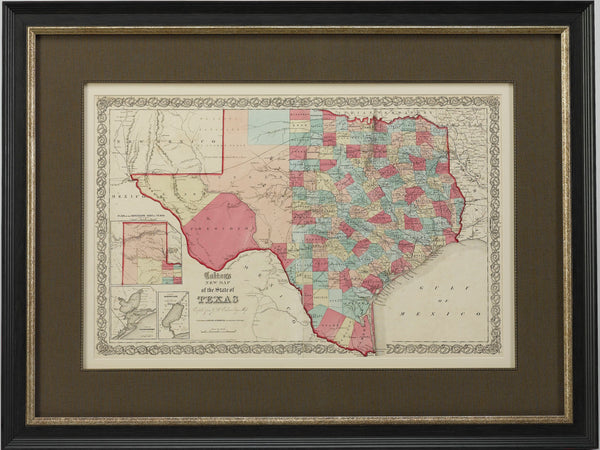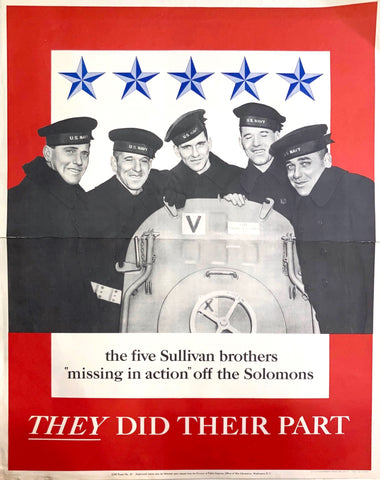World War II Posters: Suffering and Sacrifices
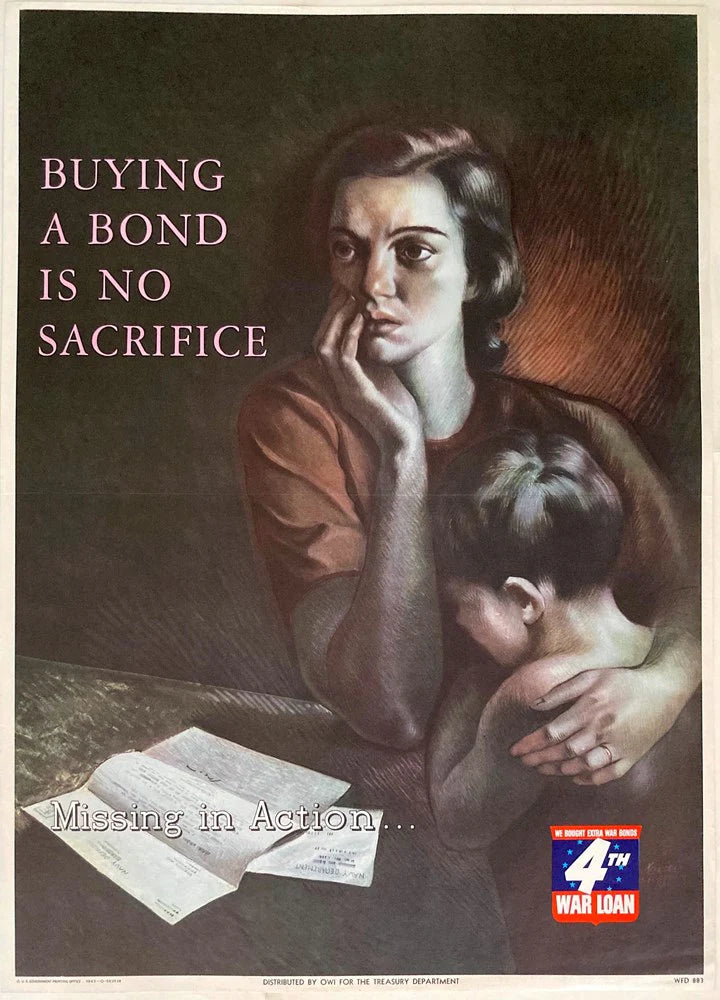
In 1942, America’s first full year in the war, most of the early OWI propaganda posters portrayed vigorous and fıt American soldiers training for battle or on their way to a seemingly exciting engagement with the enemy. Their handsome faces and strong poses “portrayed an aura of readiness and courage for the thrilling struggles to come, even as the horror and destruction of war remained an invisible subtext.” Very successful, the Office of War Information used these optimistic images to recruit soldiers, sell war loans and bonds, and establish a link between the soldiers on the front lines and the civilians left on the homefront.
"Ready. Join U.S. Marines" Vintage WWII Recruitment Poster by Haddon Sundblom, 1942
But by the late summer of 1943, the government grew more and more concerned that Allied successes on the war’s various battlefronts were fostering a sense of civilian complacency on the home front. It is during this time that we see a significant shift in the tone of messaging and types of images used by the OWI. To guard against war complacency, the Government promoted messages that reminded civilian America of the horrific suffering and sacrifices that were being made by its Armed Forces overseas.
“The mortal realities of war must be impressed vividly on every citizen. There is a lighter side to the war picture, particularly among Americans… But war means death. It means suffering and sorrow. The men in the service are given no illusions as to the grimness of the business in which they are engaged. We owe it to them to rid ourselves of any false notions we may have about the nature of war” (Government Information Manual for the Motion Picture Industry, Office of War Information).
These posters were used to shock people out of their complacency with grim, unromantic visions of war. They depicted the human cost of war, confronting the viewer with corpses, bloodshed, and gravestones, or heartbroken families back home. By emphasizing the hardships of war, the government put smaller but necessary civilian sacrifices like rationing wheat and dairy, buying savings stamps and payday loans, and taking on new jobs into stark perspective.
"They Did Their Part" Vintage WWII Poster, 1943
This WWII poster commemorates the loss of the five Sullivan brothers on the SS Juneau after its sinking on November 13, 1942, during the Battle of Guadalcanal. The poster features the five brothers in the foreground standing behind a U.S. Navy ship’s crewman quarters hatch. The text at bottom of the poster reads, “the five Sullivan brothers ‘missing in action’ off the Solomons. THEY DID THEIR PART.” Extensive newspaper and radio coverage of the incident made the loss of the brothers a national story. News of the deaths of all five Sullivan brothers became a rallying point for the war effort, with posters, bond drives, and speeches honoring their sacrifice.

"Buying A Bond Is No Sacrifice" Vintage WWII 4th War Loan Treasury Poster, 1943
Distributed by OWI for the Treasury Department, this 1943 poster reminds onlookers that "Buying A Bond Is No Sacrifice." The poster's composition features a worried mother and young son, sitting at a dark table reacting to a “Missing in Action” letter. The 4th War Loan Drive Shield is illustrated prominently at center right - reminding viewers to actually contribute and pull their weight, especially if they weren’t fighting on the front lines.
Some of the most shocking of these poster campaigns was the “Every Civilian a Fighter” campaign, a national advertising effort that was the result of collaboration among the Offıce of Civilian Defense (OCD), the WAC, and the Magazine Publishers of America (MPA). Together they published full-page advertisements “in 444 home front magazines with aggregate circulation figures topping 90.5 million, equivalent to about 68 percent of the country’s 1940 population” (Kimble, 2016). The effort’s goal was ambitious: to dispel lethargy and rouse people into war activity and impress home front citizens with the meaning of total war and their stake in victory. True to its aim of using hard-hitting and realistic material, three of the ads featured drawings of dead or injured American GIs.
In this 1943 Office of Civilian Defense poster by Frederic Stanley, a shocking depiction of a dead soldier on the beach is paired with a persuasive text block, shaming the American public into making a bigger, more substantial contribution. the poster reads, "Today at the front, he died... Today what did you do?," in stark black text. It is important to note that this poster, however accusatory, was meant not to condemn the American public, but rather to motivate the public into more action. The poster is quick to point the way toward redeeming behavior- in this case, with instructions at the bottom on how to join or start a Civilian Service Corps in their town.
Also in Blog
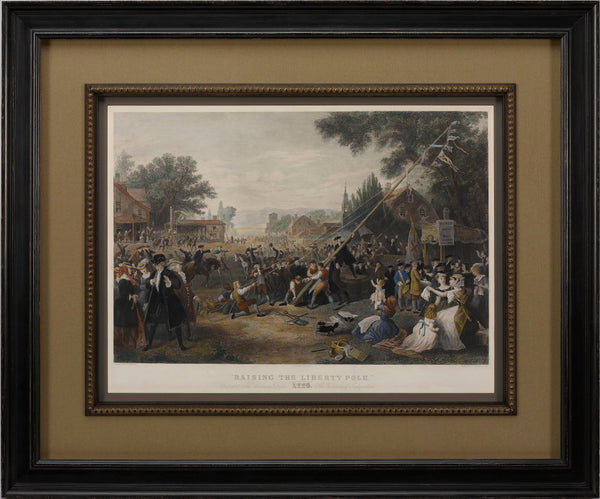
Symbols of Revolution: Liberty Poles & Caps
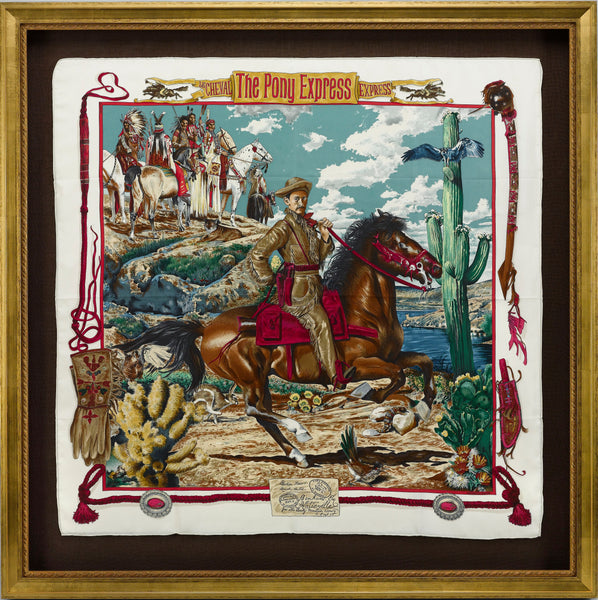
Connecting the West with the Pony Express
